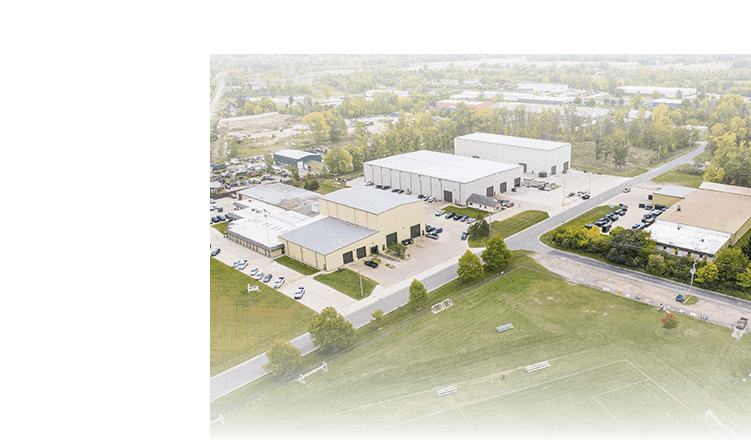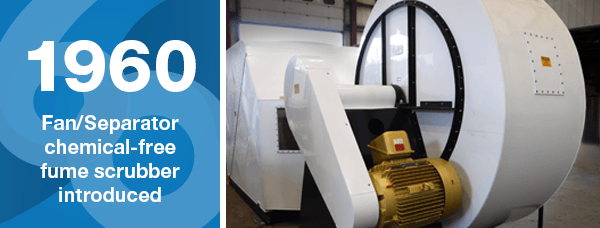
This unique, chemical-free fume scrubber is highly efficient at removing H2SO4 and other contaminants. Within a decade, it became the gold standard for emissions generated by sulfuric acid pickling, metal plating and battery charging operations.


The ultimate baghouse alternative, Whirl/Wet is 99%+ efficient over a wide range of particulate. Energy generated inside the unit prevents clogging, so the sticky residues that plug baghouses are not an issue. Low water use.
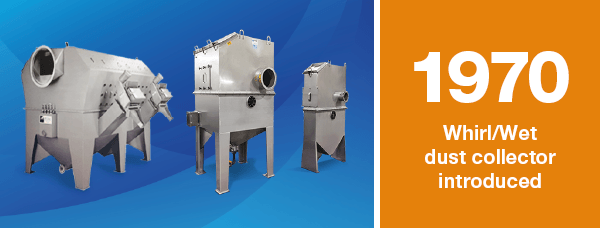
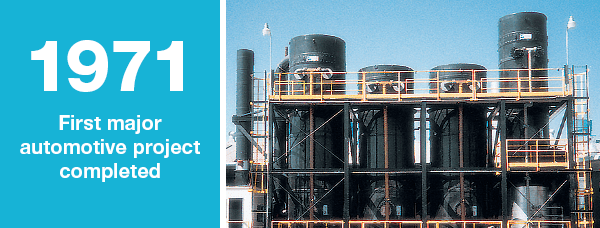
Tri-Mer built its air pollution control systems – and its high quality reputation – as a supplier to automotive plants in both the US and Canada


The Tri-Mer OM/1 design is compatible with mineral oils, soluble oils and synthetics, and accommodates multiple mist sources. Its low-pressure design minimizes energy consumption; long-lasting filter cartridges are easily removed, cleaned and restored to service.
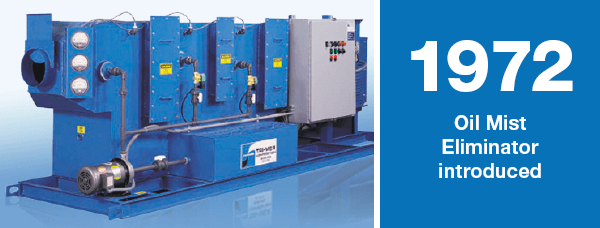
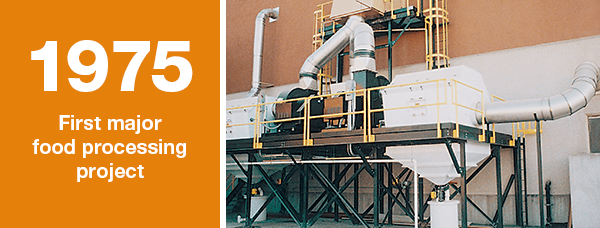
Tri-Mer wet scrubbers and dust collectors are widely used by manufacturers of snack foods, spice blends, and breaded frozen products. Our odor control systems are an efficient option for processing facilities involving meat, poultry or citrus.

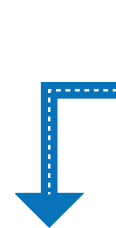
Tri-NOx NOx scrubber system iaccommodates any combination of NO and NO2, including nitration-related, and combustion-related NOx, Tri-NOx guarantees a clear stack and eliminates the visible plume generated by high NO2 loading.
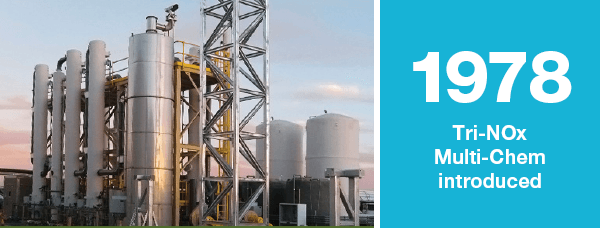
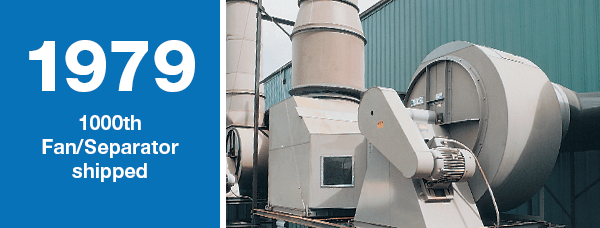
Customers worldwide have chosen our chemical fume eliminators which scrub corrosive fumes using 1/10th the water and operate with 20% less brake horsepower than competitive systems. Efficiency range approximately 99%; low humidity stack.


Tri-Mer manufactures and installs process tanks or heavy-service use. We specialize in large custom tanks made from 1” polypropylene, in lengths to 110', depths to 15'. PVC, PVDF and stainless steel tanks also manufactured.
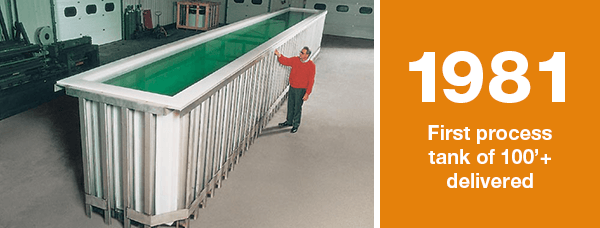
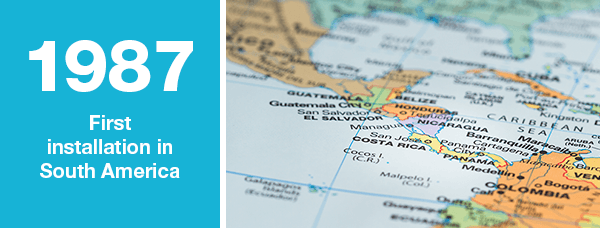
¿hablas español? Tri-Mer has supplied Mexico, Central America and South America companies with air pollution control for 35+ years. Tri-Mer scrubbers and dust collectors are recognized for their high quality, low maintenance and local service.


Tri-Mer’s C/E-1 scrubs chrome including Cr6 and Cr3, at 99.5% efficiency or higher, regardless of loading. System generates less than 8" of internal static pressure, so energy consumption is low. Water use is also minimal.
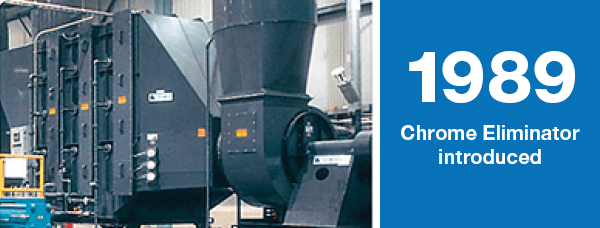
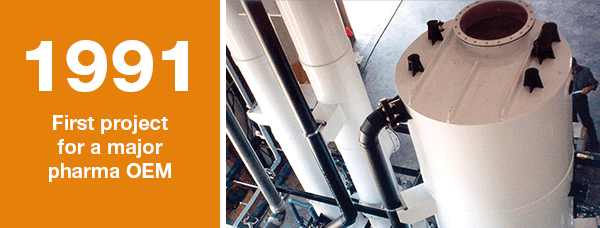
Tri-Mer has established an enviable reputation among pharmaceutical OEMs for managing NOx, SO2, VOCs, solvent fumes, fermentation byproducts and every type of soluble and insoluble particulate from research, manufacturing and packaging operations in pharmaceutical facilities.


Tri-NOx Multi-Chem has no cfm/ppm limitations and achieves virtually any target stack output. It was a game-changer for an OEM experiencing rapid growth because it reduced NOx loads of 100,000 ppm to below 5 ppm.
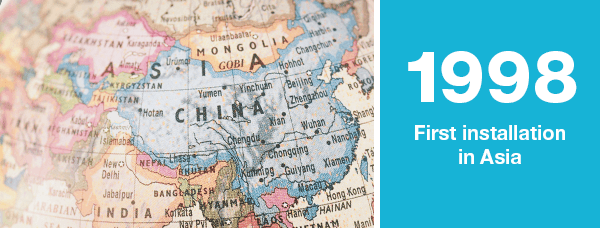
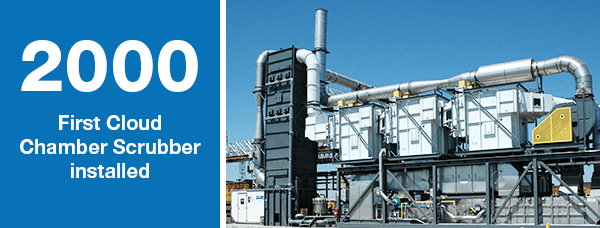
Before “CCS,” many patents were issued for devices claiming to use charged droplets to remove aerosol particles. None achieved commercial success. Until development of the Cloud Chamber, the potential of charged-droplet scrubbing of fine particulate remained unrealized.


Tri-Mer wet scrubbers efficiently capture polycyclic aromatic hydrocarbons and halogenated organic components and a broad spectrum of inorganic and organic emissions, and heavy metals. Tri-Mer also manufactures intricate process lines for the PCB/wafer industries.
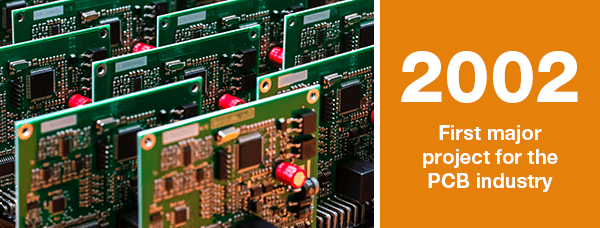
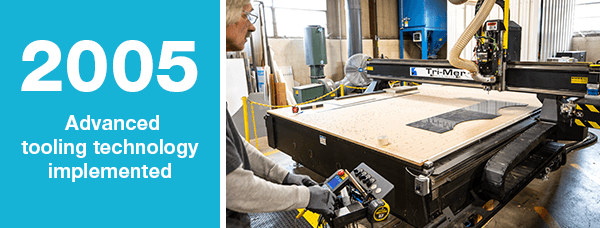
Tri-Mer fabrication capabilities expanded over time to include every major engineered plastic, also stainless steel and special alloys. To maintain a competitive advantage in price and lead time, we invested aggressively in high precision tooling.


Tri-Mer’s Catalytic Ceramic Filter system simultaneously controls multiple pollutants, including PM, SOx, and NOx. Filters are embedded with nanobits of NOx or VOC catalyst; particulate, SO2, HCl, metals and NOx are removed by this all-in-one system.
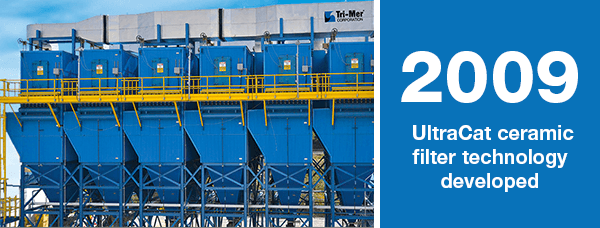
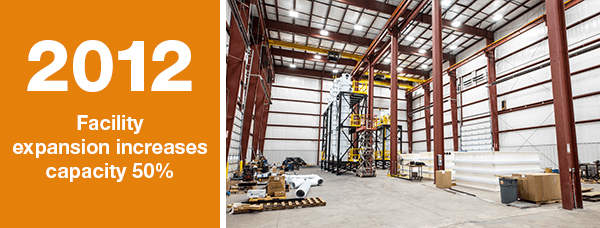
We expanded our production area to accommodate UltraCat catalytic filter systems ordered by the global glass industry, and to expand the number of wet scrubbers that could be manufactured and tested simultaneously.


Tri-Mer Corporation’s ability to meet stringent EU regulations regarding air pollution control has created strong interest in Tri-Mer technologies by member countries. New rules will limit PM2.5 and NO2, the two deadliest air pollutants, to 10 µg/m3 and 20 µg/m3 respectively.
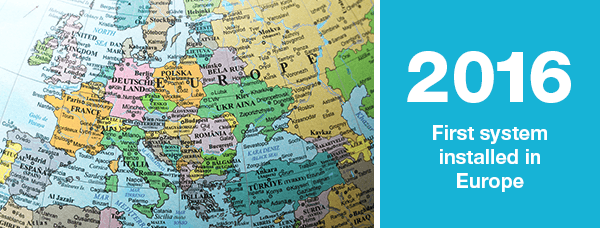
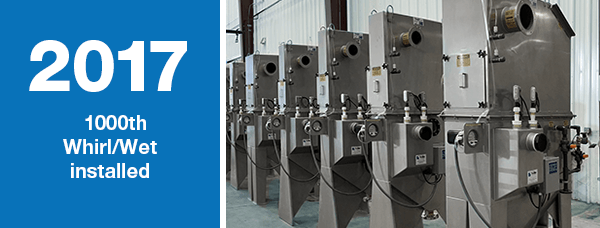
This unique dust collector has no moving parts, and no “wear parts” to replace. Many Whirl/Wets from the 1970s remain in service today. Including Whirl/Wets, Tri-Mer has installed 6,000+ air pollution control systems to date.


A second facility expansion in just a half-decade gave Tri-Mer significant added fabrication and design capacity as the company strengthened its presence among manufacturers in the US, Mexico, the EU and Asia.
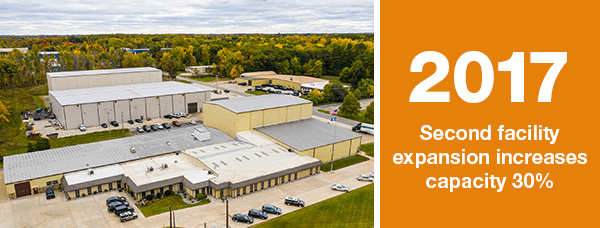
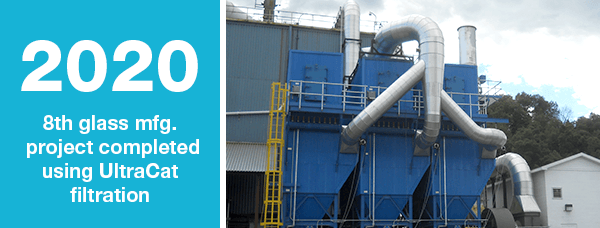
Tri-Mer Corp. is the global leader in air pollution control for glass furnace emissions, with more installed systems than all competitors combined. UltraCat Catalytic Filter Systems remove PM, SO2, HCl, mercury and heavy metals at temperatures up to 1650°F, in one system.


Tri-Mer provides high-efficiency air emission control solution for biomass processing; system treats NOx, acid gases (SO2, HCl, HF), PM, O-HAPS/HAPS, heavy metals, dioxins and furans in the exhaust of a combustion-based biomass-to-energy process.
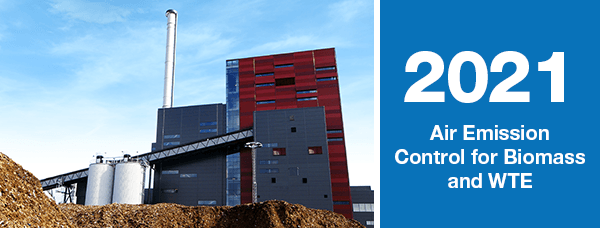
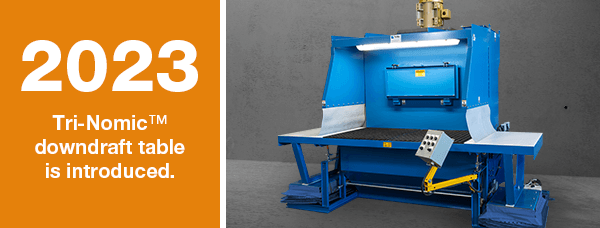
Tri-mer's new workstation is a unique, ergonomic system that adjusts to the individual machinist, collects particulate, fines, fumes with low water use and low decibel level.
